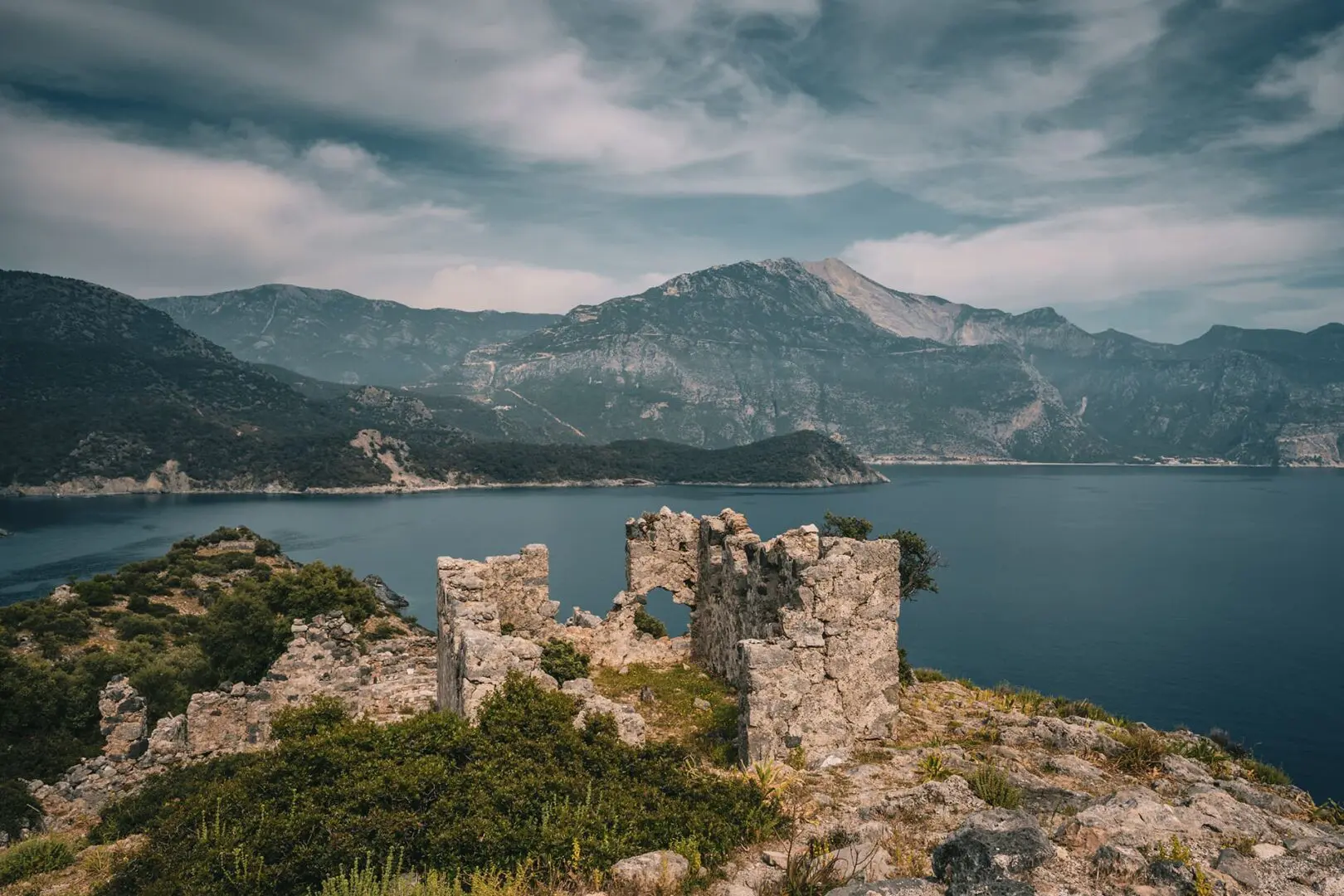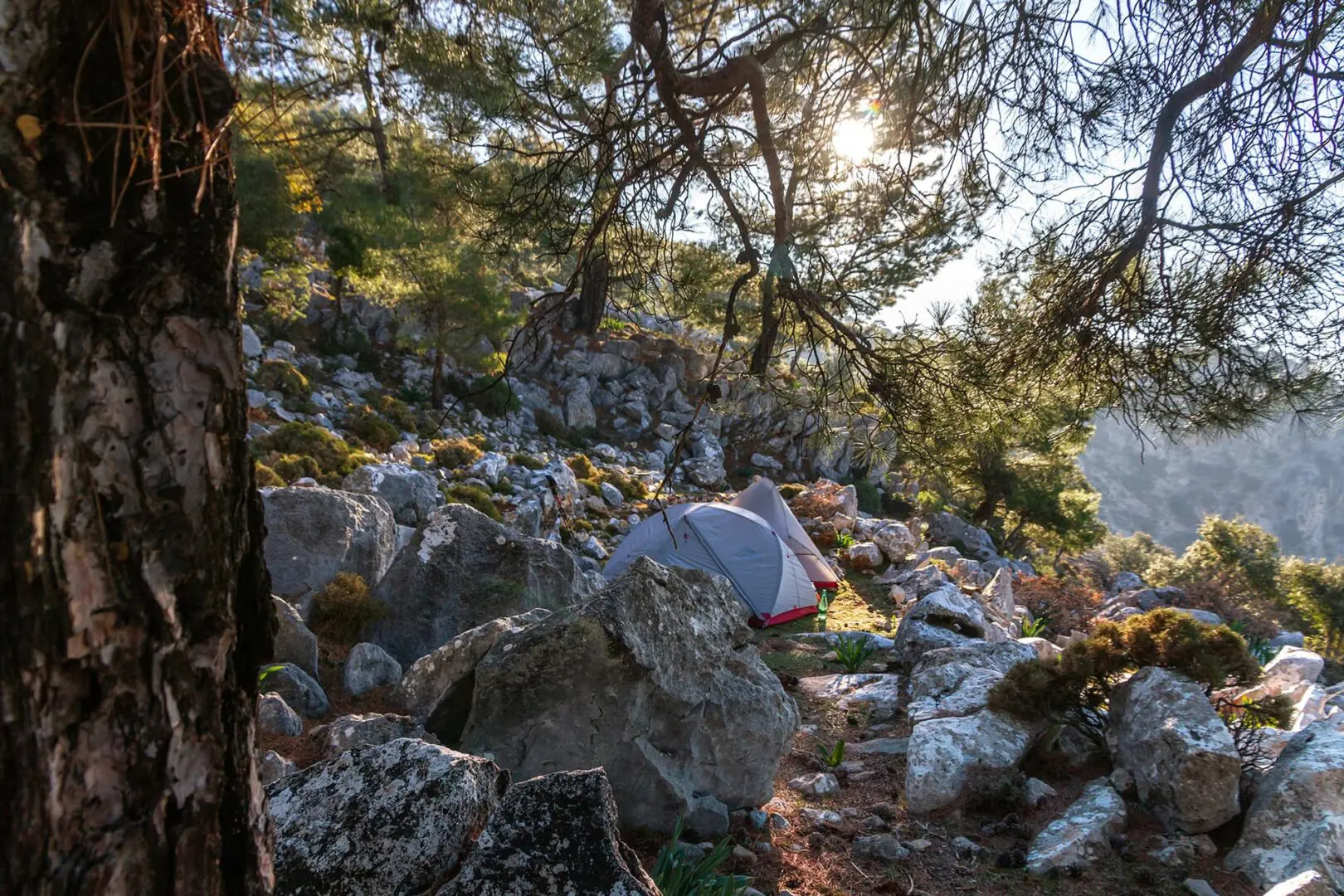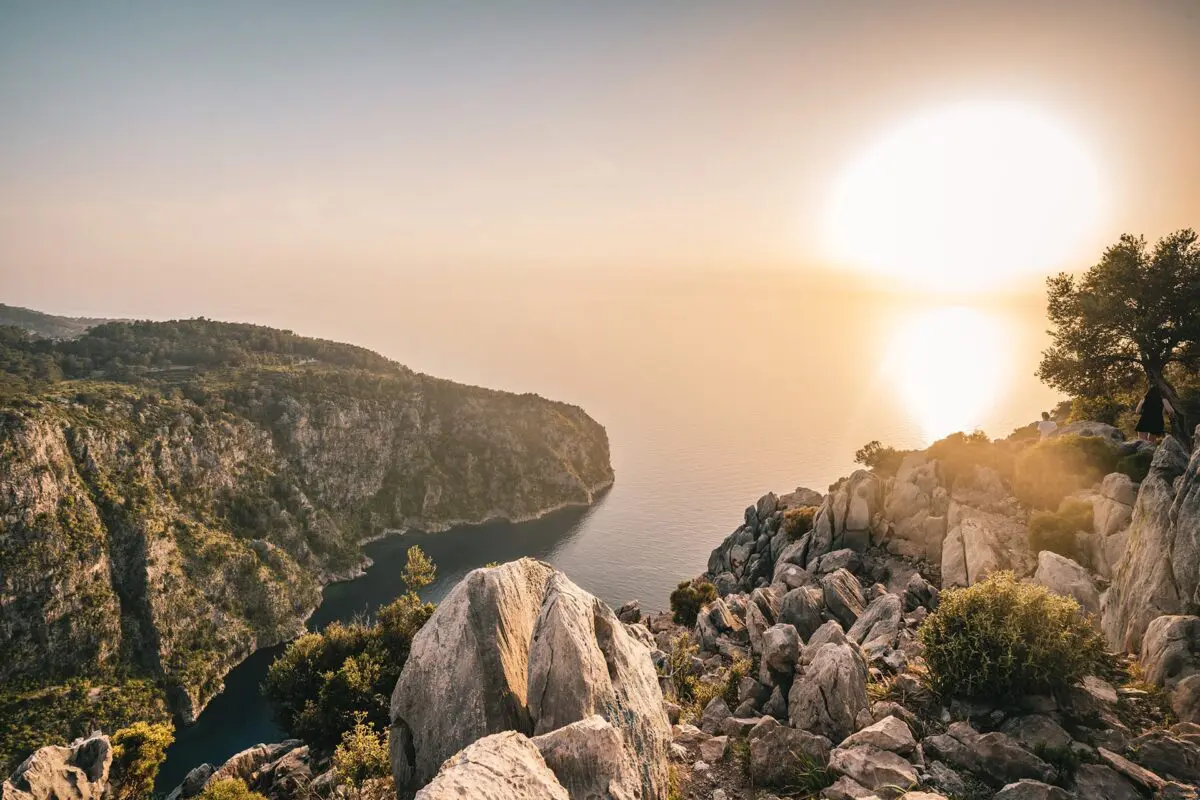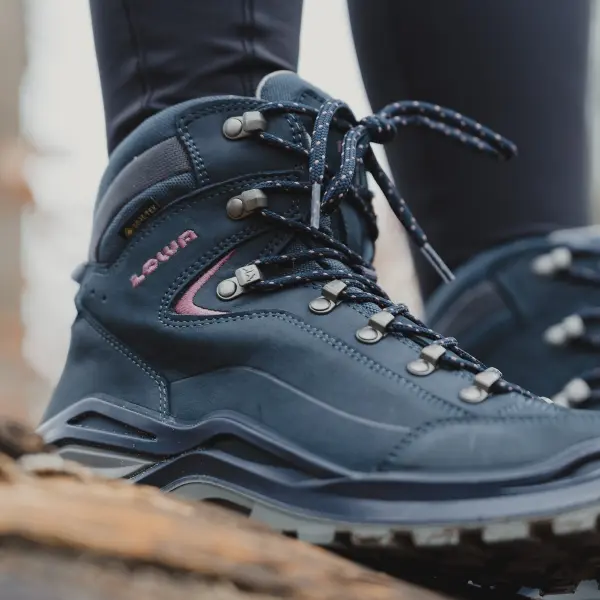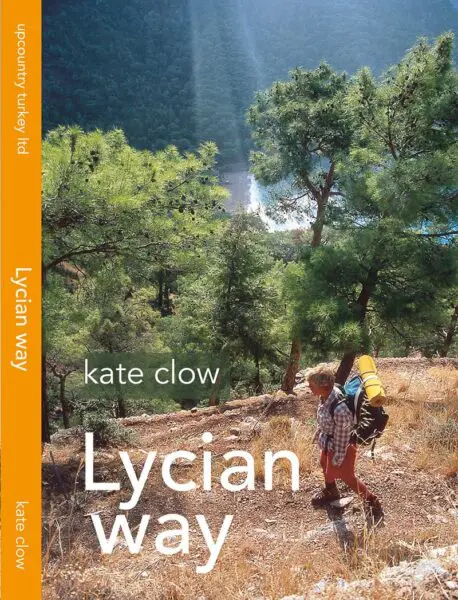The start point, at Ölüdeniz, is 2 hours from Dalaman airport by bus and the endpoint is now at Geyikbayırı, from which there are daily buses to Antalya.
Snakes, spiders, and scorpions can be found on the Lycian Way, so always be mindful when stepping over or moving rocks. It’s wise to shake out your shoes each morning. Be aware that Turkey has a lot of stray dogs, most of whom are friendly and curious but occasionally they can be territorial. If you’re feeling threatened, the act of bending down to pick up a rock/stone is enough for them to run away, rarely would you need to throw one. Many locals keep Kangal dogs as guard dogs for their livestock, but they are usually chained up so you don’t need to worry about walking past them.
Water points are frequent on the route. There are community taps in most towns and villages and sometimes you’ll pass taps or wells on the more remote sections. It is safe to drink from these water sources, though it is recommended to carry a water filter or purification tablets/drops. Due to high temperatures in this part of Turkey, it’s important to check the map resources to locate and know the next water source ahead. Make sure to plan food and water carries as there are remote sections without access to either.
The weather can be excruciatingly hot, depending on when you go and there are many unshaded sections where you’ll be very exposed to high UV levels. Be prepared with sun protection; umbrellas, hats, sunscreen, and sunglasses.
The Lycian Way can also be very remote. The trail crosses some sleepy villages and farms where you might occasionally see someone, but often you will be hiking for hours without seeing anyone. Hiking isn’t very popular within Turkish culture, rarely do you meet day hikers.



